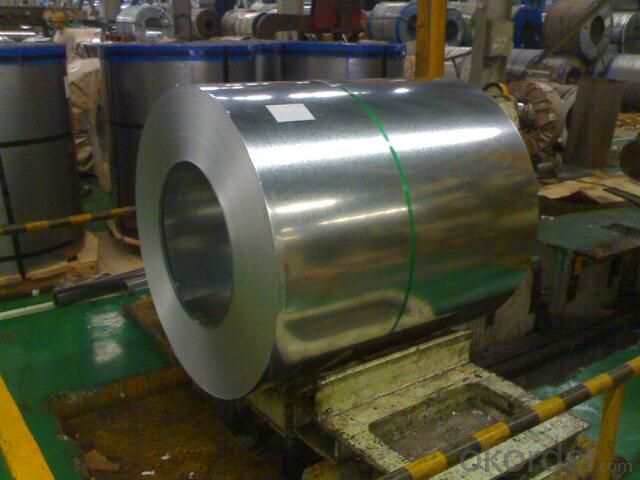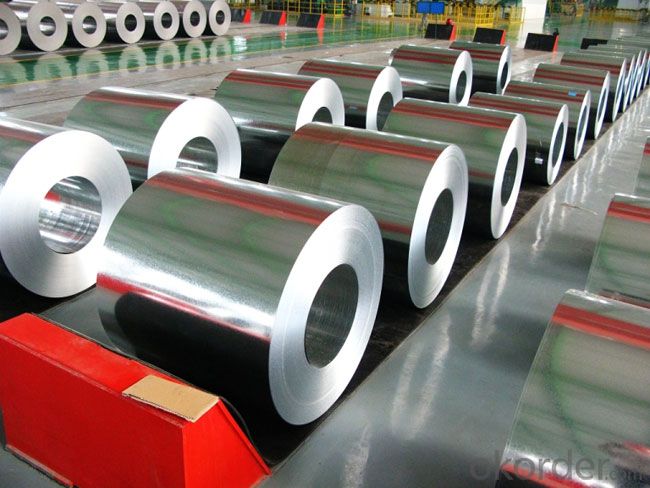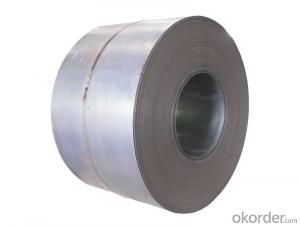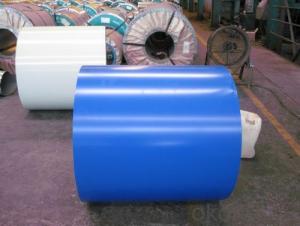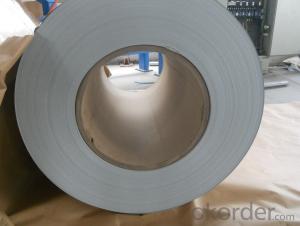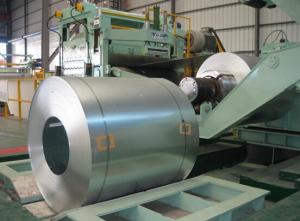Gavanized steel coils and sheets
- Loading Port:
- China Main Port
- Payment Terms:
- TT OR LC
- Min Order Qty:
- -
- Supply Capability:
- -
OKorder Service Pledge
OKorder Financial Service
You Might Also Like
Specifications
GI/HDGI
1.Size:0.16-0.7*900-1250mm
2.Z30-Z275
3.Any spangle
4.ISO
1.GI /Galvanized steel coil Good quality
CERTIFICATE | GI:ISO9001:2008 |
STANDARD | GI :ASTM A653, JIS G3302 SGCC/SGCH ,GB/T 2518, European standard |
GRADE | GI : SS grade 33-80; SGCC, SGCH, SGCD1-SGCD3, SGC340-SGC570, SGCC, DX51d |
MODEL NO. | GI :(0.14-1.5)*1250MM or under |
TYPE | GI :steel coil, steel sheets/ plates, corrugated steel sheets/plates |
TECHNIQUE | GI: hot rolled-cold rolled-galvanized |
SURFACE TREATMENT | GI : Mini/regular/big/zero spangle, ,Chromate treatment/ chromate-free treatment/ unSURFACE TREATMENTtreated Unoile/ oiled ,TENSION LEVELLERT SKIN PASS anti-fingerprint/Un-anti-fingerprint, coating |
APPLICATION | GI : structural use, roofing, commercial use ,household appliance,industry,family |
SPECIAL APPLICATION | GI :wear resistant steel, high-strength-steel plate |
- Q: What are the common coil transportation methods?
- The common coil transportation methods include using flatbed trucks, coil racks, coil cars, and coil trailers.
- Q: i know that steel helmets werent meant to stop bullets, but i was wondering do they have an value whatsoever for stopping bullets, or is that just yet another thing that hollywood made up(like the omaha beach scene in saving private rian)
- Steel helmets were made to stop shrapnel; steel fragments from artillery bursts. They were never meant to stop bullets and most modern rifle rounds will penetrate a steel helmet with ease. The US went to Kevlar helmets for lighter weight and better ballistic protection. Some helmets will deflect handgun rounds. Over half of combat injuries were caused by artillery, so the thinking was to reduce head injuries from shrapnel.
- Q: What are the common size limitations for steel coil production?
- The size limitations for steel coil production can vary based on various factors, including the type of steel used, the manufacturing process, and the available equipment. However, there are generally accepted size limitations in the industry. One primary constraint is the width of the steel coil, which is typically determined by the size of the rolling mill or slitting equipment used in production. Standard widths for steel coil production range from approximately 600 millimeters (23.6 inches) to 2,000 millimeters (78.7 inches). Nonetheless, specialized equipment and processes can achieve widths outside of this range. Another limitation is the thickness of the steel coil, which can be influenced by the type of steel, intended application, and manufacturing capabilities. Common thicknesses for steel coils range from 0.15 millimeters (0.006 inches) to 6 millimeters (0.236 inches). However, specialized equipment and processes may be required to produce thicker or thinner coils. The weight of the steel coil is also an important consideration, typically determined by the capacity of production and handling equipment, as well as transportation limitations. Standard coil weights range from a few hundred kilograms to several tons. However, larger equipment or dividing the coil into smaller coils can enable the production of coils that exceed these limits. In addition to width, thickness, and weight, there may also be limitations on the length of the steel coil. This can be influenced by factors such as the size of the production line, handling and transportation capabilities, and customer requirements. Standard coil lengths typically range from a few meters to several tens of meters. However, specialized equipment and processes can produce longer coils. It is important to note that these size limitations are not fixed and can vary depending on project or customer requirements. Manufacturers often collaborate closely with customers to determine the optimal size limitations for their steel coil production, ensuring the final product meets desired specifications.
- Q: What are the different coil leveling line configurations used for steel coils?
- The steel industry utilizes various coil leveling line configurations to meet specific requirements and preferences. Some commonly employed configurations include: 1. Straightener: Employed to rectify coil shape defects or distortion. It consists of rollers that gradually straighten the coil. 2. Leveler: Ensures consistent thickness throughout the coil. Utilizes rollers to flatten the coil to the desired thickness. 3. Combination Straightener/Leveler: Integrates both straightening and leveling functions into a single machine. Combines rollers and straightening elements for shape correction and thickness leveling in one pass. 4. Looping Pit: Allows continuous processing of accumulated coils. Serves as a buffer between the entry and exit sections of the leveling line, accommodating variations in coil supply and demand. 5. Tension Leveler: Applies tension during leveling to remove shape defects and achieve a flat, uniform surface. 6. Rotary Shear: Incorporates a synchronized rotary shear to cut the leveled coil accurately and precisely. These examples showcase the diverse coil leveling line configurations used in the steel industry. The choice of configuration depends on factors such as desired product specifications, coil dimensions, processing speed requirements, and budget considerations.
- Q: What are the environmental considerations associated with steel coil production?
- The environmental considerations associated with steel coil production include the extraction of raw materials, such as iron ore and coal, which can lead to habitat destruction and air/water pollution. The manufacturing process involves energy-intensive operations and emissions of greenhouse gases, contributing to climate change. Waste generated during production, such as slag and dust, can also have negative impacts on the environment if not properly managed. Additionally, the transportation of steel coils over long distances can result in carbon emissions and increase the overall environmental footprint of the product.
- Q: What are the typical coil width options?
- The typical coil width options vary depending on the industry and application, but common options include 12 inches, 18 inches, 24 inches, and 36 inches.
- Q: What are the different types of steel coil edge condition options?
- There are several different types of steel coil edge condition options available, each with its own unique characteristics and advantages. Some of the most common types include: 1. Mill Edge: This is the most basic and common type of steel coil edge condition. It is produced during the hot rolling process and is characterized by a naturally rough and uneven edge. Mill edge coils are typically used for applications where the edge quality is not critical, such as in general fabrication. 2. Slit Edge: Slit edge coils are created by cutting the edges of the steel coil using a slitting machine. This process produces a smoother and more uniform edge compared to mill edge coils. Slit edge coils are often preferred for applications that require a higher level of precision, such as in automotive or electrical industries. 3. Trim Edge: Trim edge coils are similar to slit edge coils but with an additional trimming process to remove any defects or imperfections from the edges. This results in an even smoother and cleaner edge, making trim edge coils ideal for applications where appearance and aesthetic quality are important, such as in architectural or decorative purposes. 4. Deburred Edge: Deburred edge coils undergo a deburring process to remove any sharp or burr-like edges. This is done to ensure safety and prevent injury during handling or processing of the coils. Deburred edge coils are commonly used in industries where worker safety is a priority, such as in construction or manufacturing. 5. Rounded Edge: Rounded edge coils have their edges rounded off to eliminate any sharp corners or edges. This type of edge condition is often used in applications where the coils will come into contact with delicate materials or surfaces, as it helps to prevent scratching or damage. It is important to note that the choice of steel coil edge condition will depend on the specific requirements of the application and the desired outcome. Each type of edge condition offers its own unique benefits, and it is crucial to consider factors such as precision, appearance, safety, and functionality when selecting the appropriate option.
- Q: What are the common methods of recoiling steel coils?
- The common methods of recoiling steel coils include slitting, rewinding, oscillating, and recoiling using a mandrel or a recoiler machine. Slitting involves cutting the wide coil into smaller widths, while rewinding involves rewinding the coil into a tighter, more compact roll. Oscillating is a method where the coil is wound back and forth to create a narrow, oscillating coil. Finally, recoiling using a mandrel or a recoiler machine involves winding the coil onto a mandrel or a spool to create a new coil of desired size and shape.
- Q: is red steel any good??????? not sure im really impressed but im not really into fighting games but it looks cool.... so whats your views guys???????anyone bored of smooth moves yet?anyone think the new sonic is bit cra ppy !!!!!!!!!!! darn them any new goooood games coming oput on the wii??
- red okorder . I think it deservs a rental
- Q: What is the material of steel coil 08F and what brand can be used instead?
- The high quality carbon structural steel, carbon steel, steel commonly referred to as. Steel for the manufacture of parts for various machines.1.08 and 08F steel is used for rolling thin plates, deep drawing products, oil drums and high-grade enamel products. It can also be used for the manufacture of pipes, gaskets and core parts with low strength requirements, carburizing and cyaniding parts, welding electrodes and so on.2.10 and 10F steel, use cold pressing deep drawing products below 4mm, such as deep drawing vessel and shell. It can also make boiler tubes, oil drum covers and steel strips, steel wires, welding pieces and mechanical parts.3.15 and 15F steel are used to make carburizing parts, fastening parts, die forging parts and low load parts without heat treatment, such as bolts, screws, flanges and storage tanks for chemical machinery, steam boilers, etc..
Send your message to us
Gavanized steel coils and sheets
- Loading Port:
- China Main Port
- Payment Terms:
- TT OR LC
- Min Order Qty:
- -
- Supply Capability:
- -
OKorder Service Pledge
OKorder Financial Service
Similar products
Hot products
Hot Searches
Related keywords




